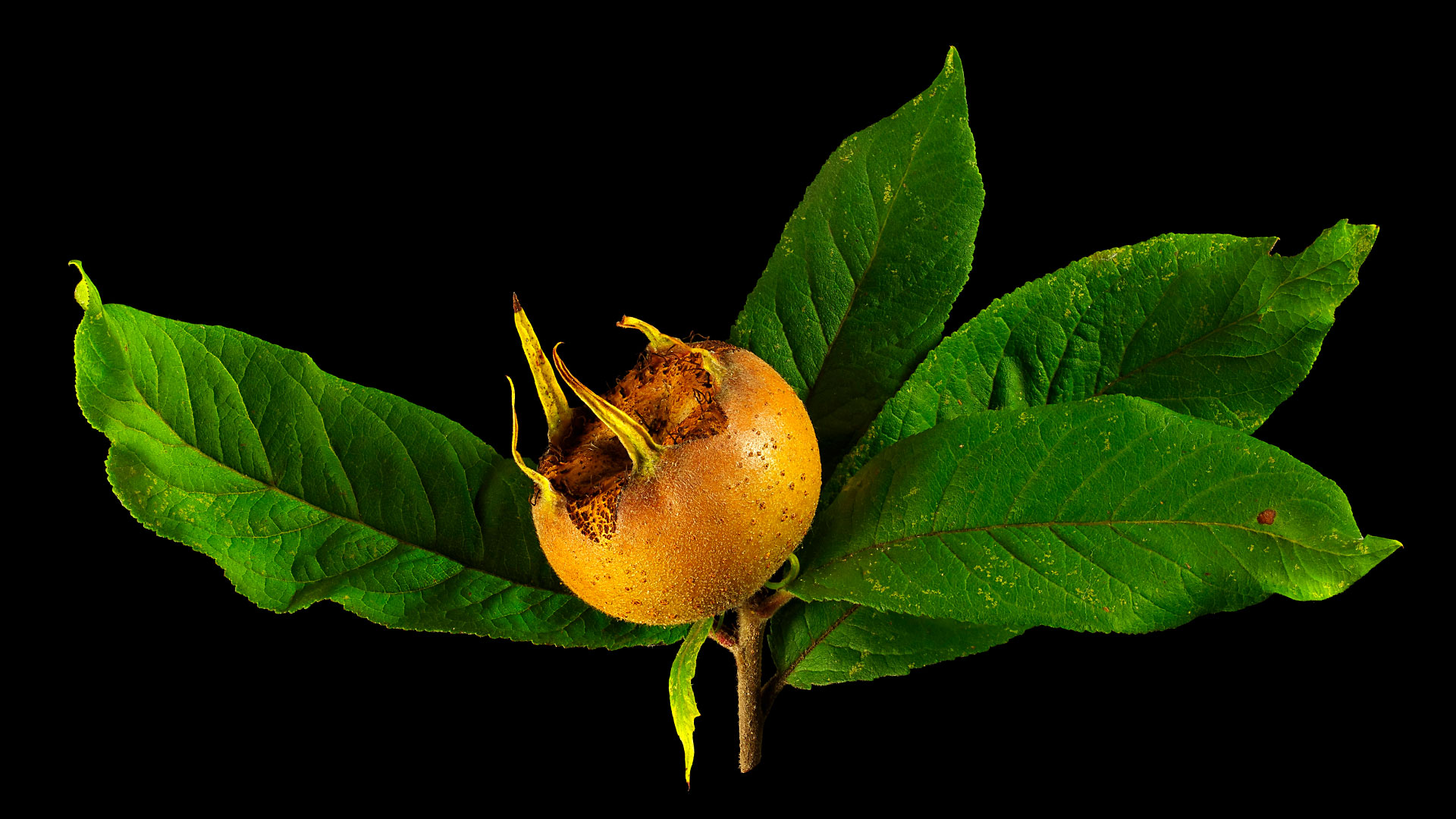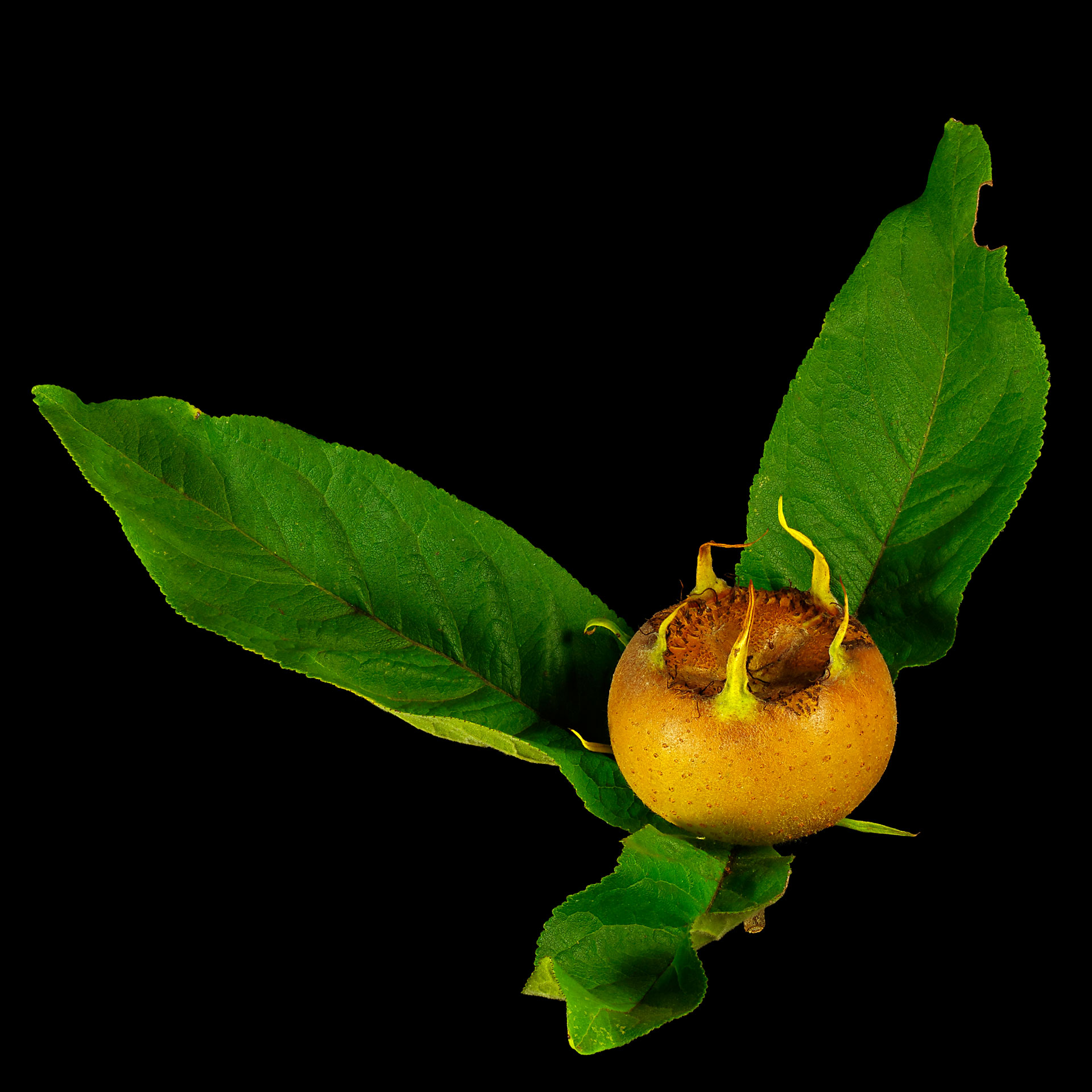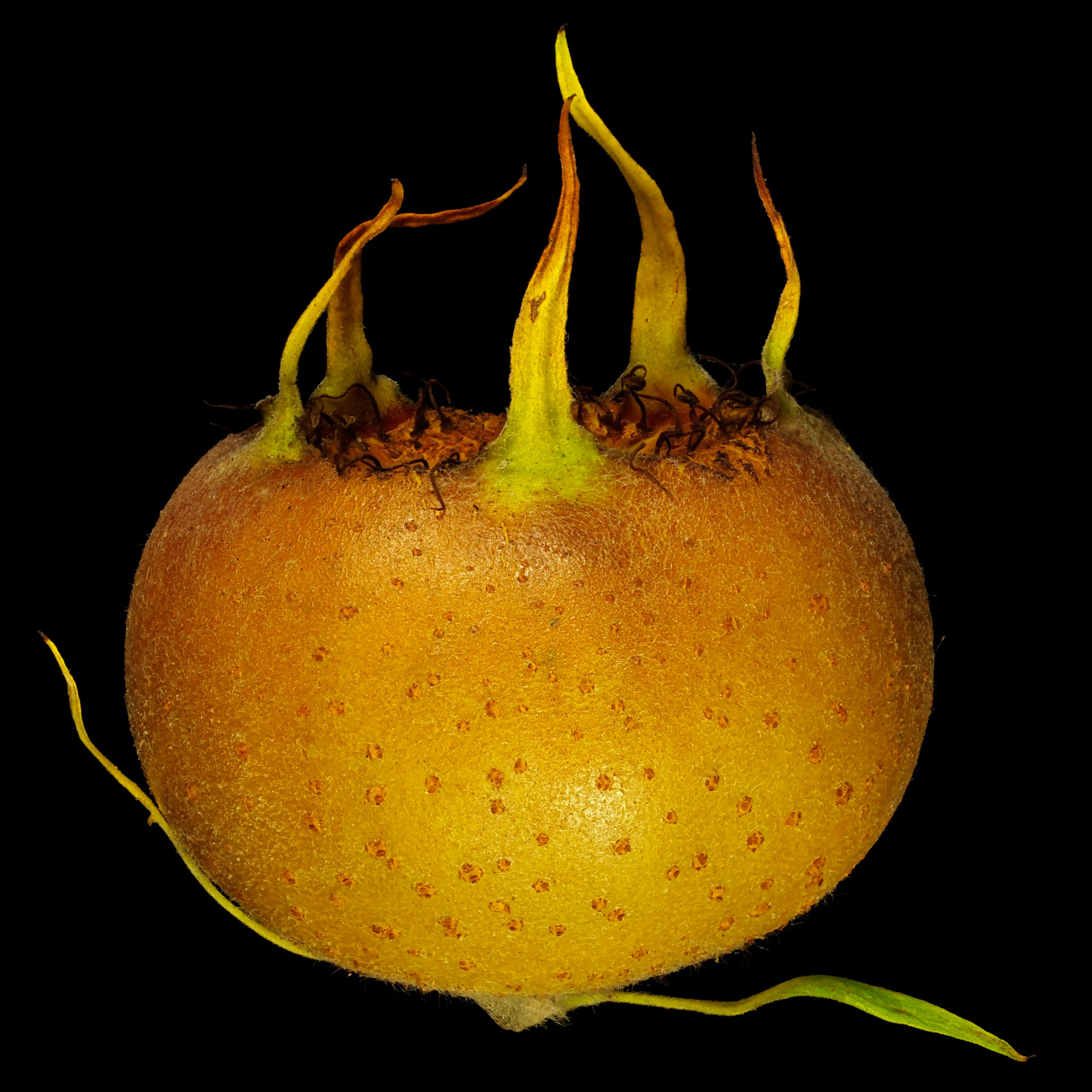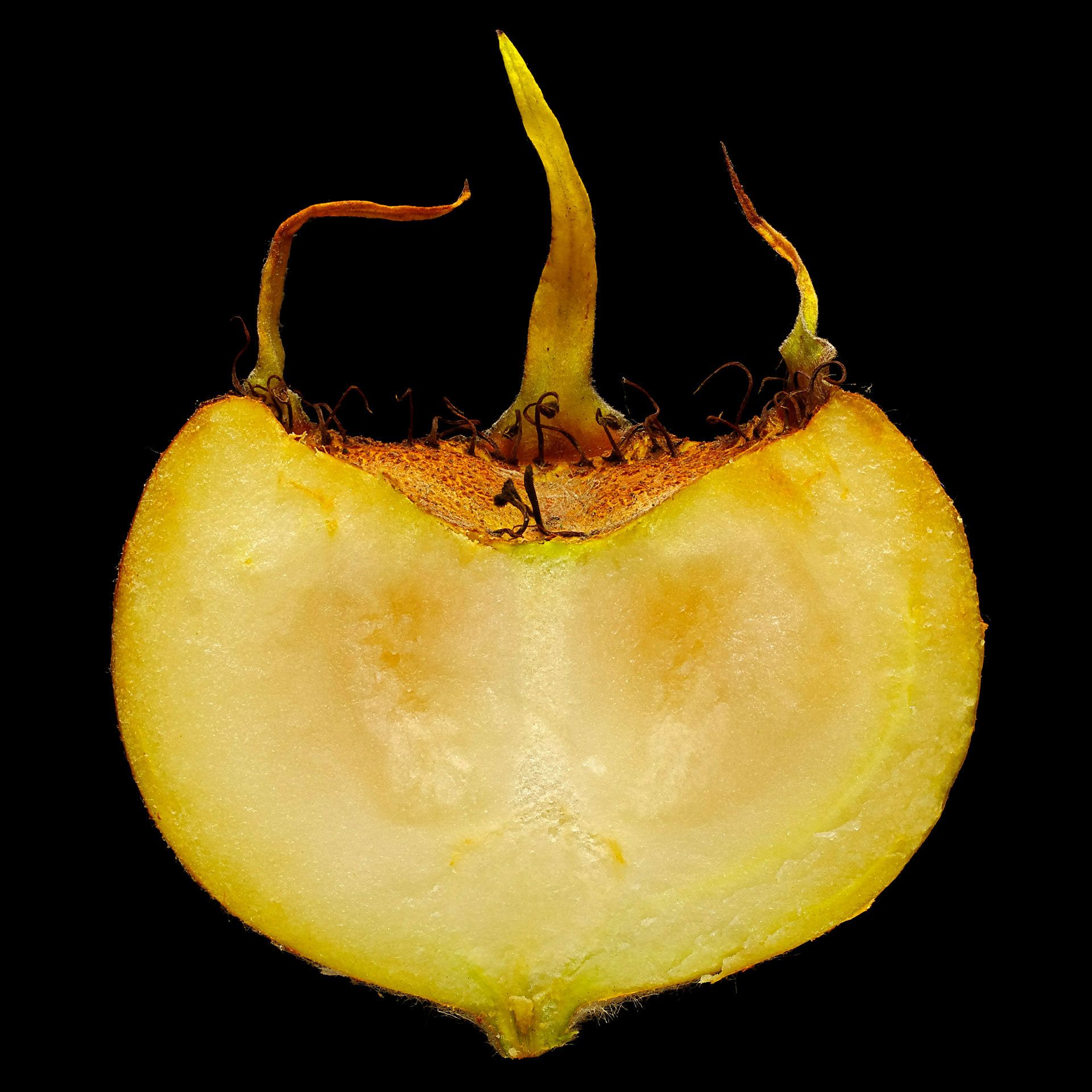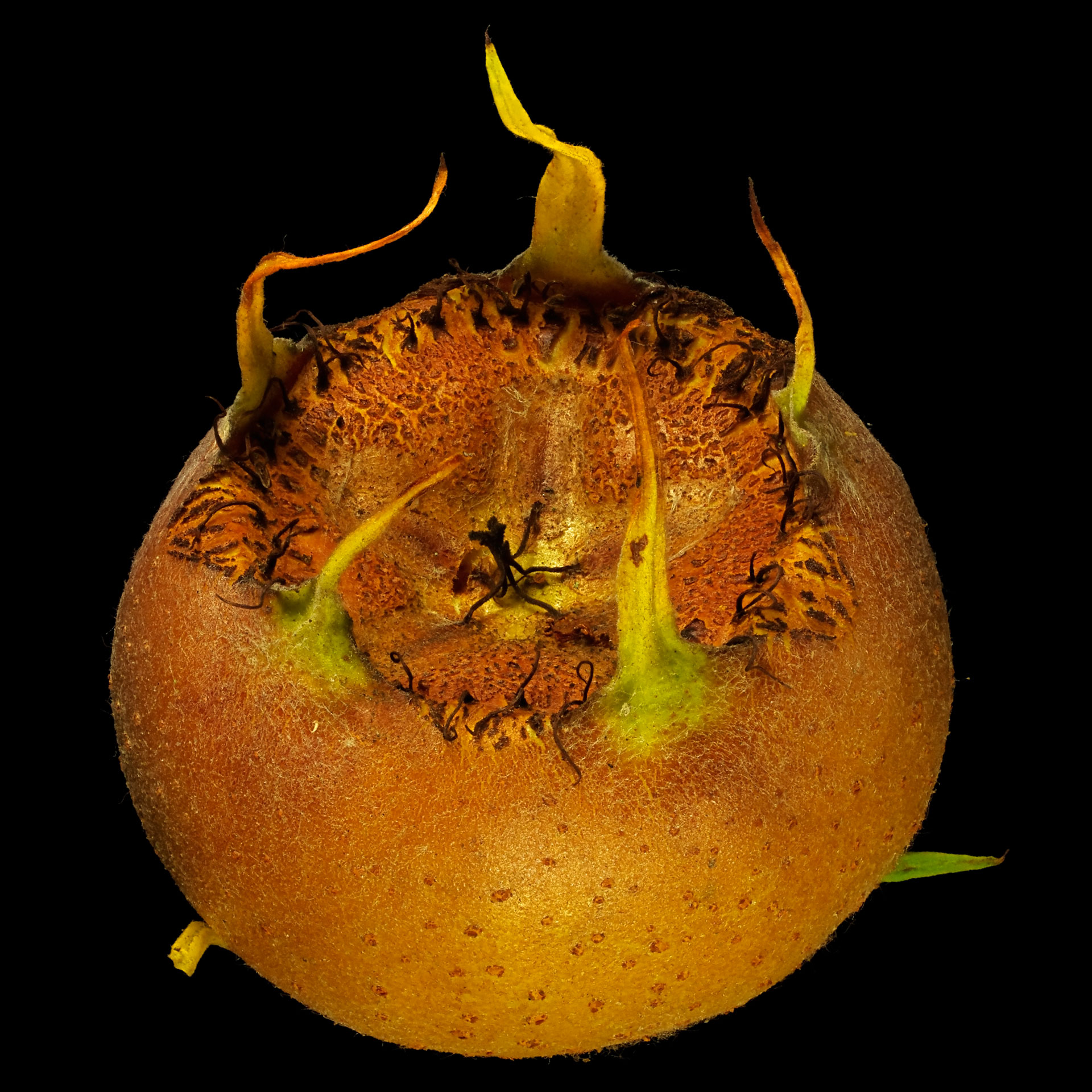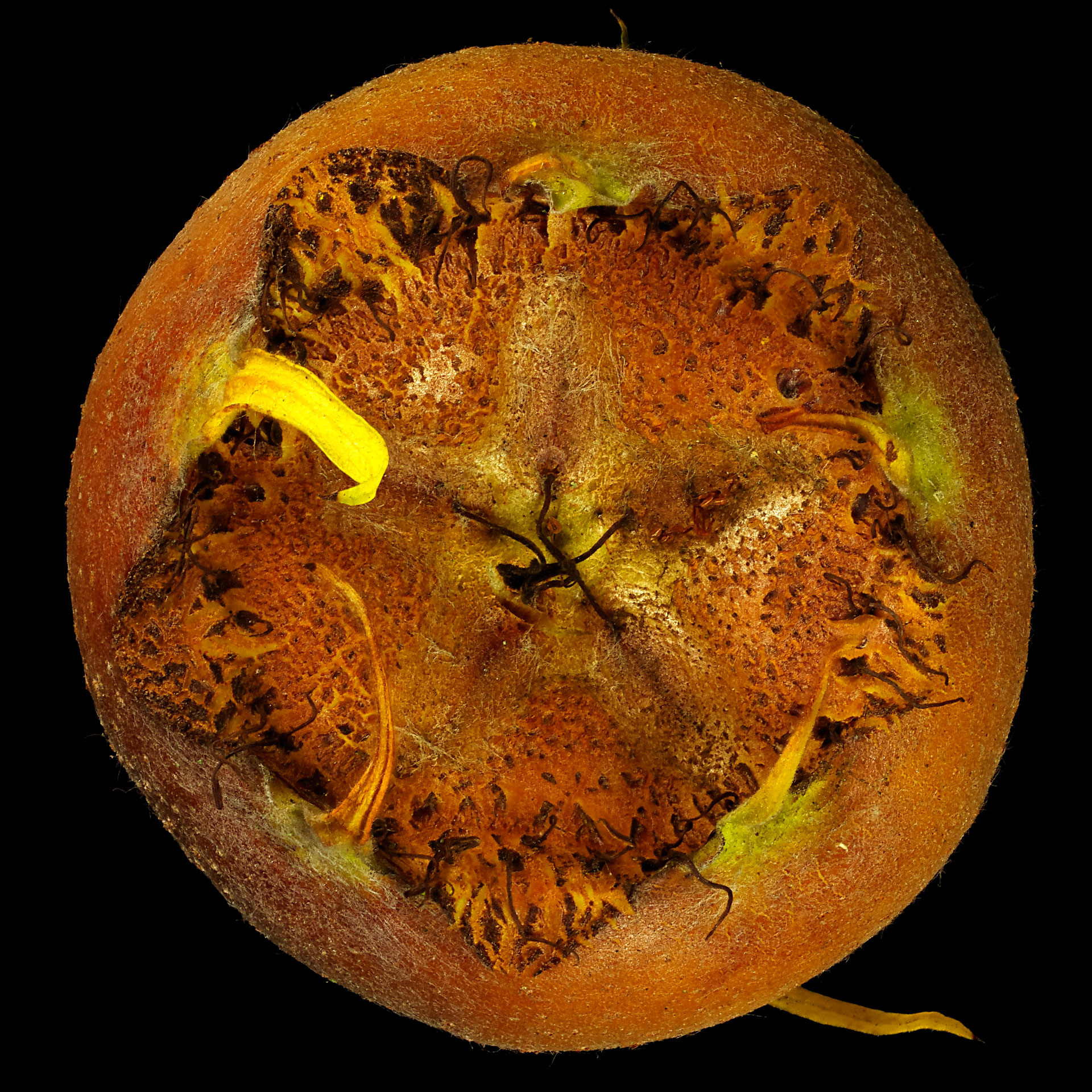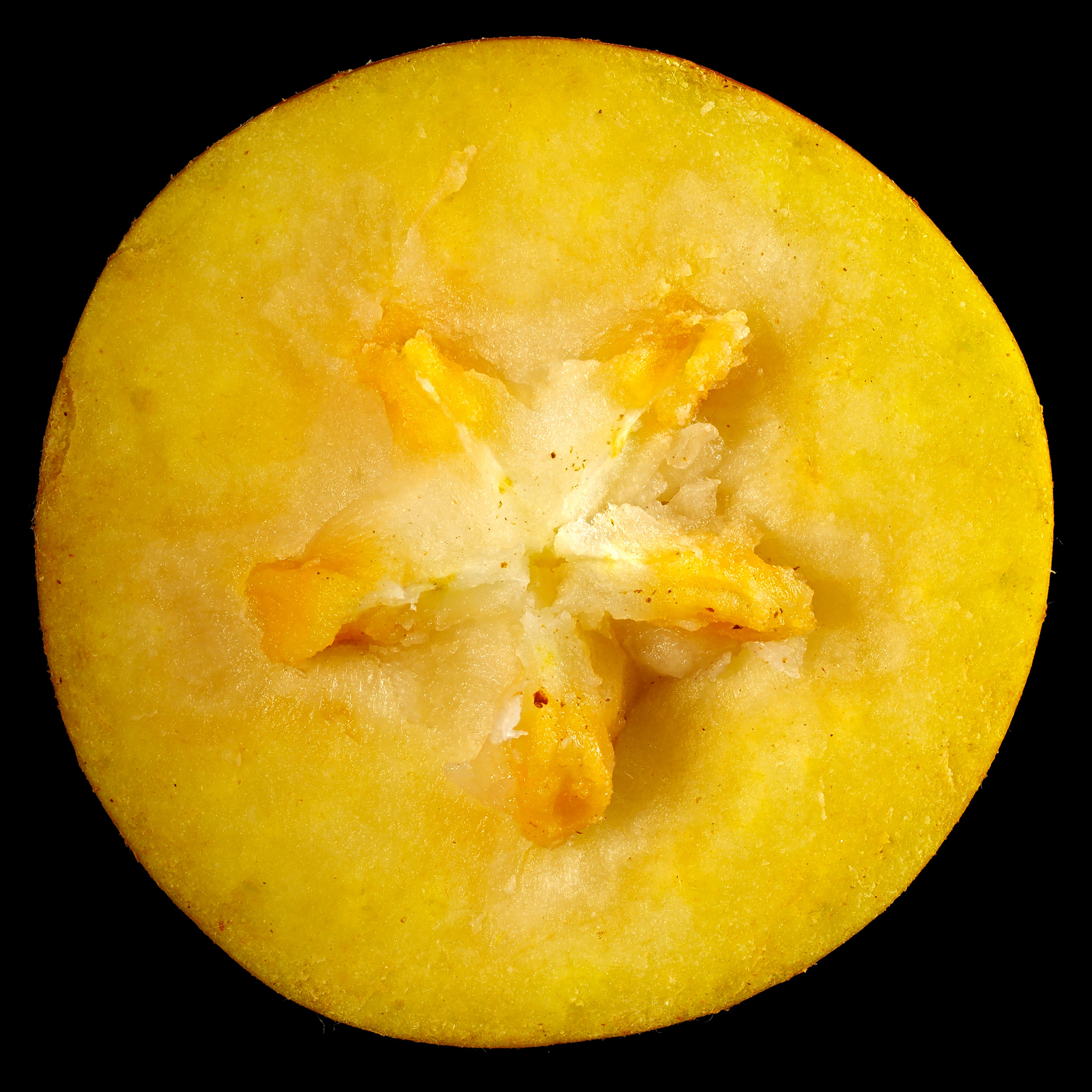Common medlar: Mespilus germanica
The one and onlyFor a long time, the species M. germanica was considered as the only representative of the genus Mespilus, until M. canescens was described as own species in 1990. In the trade, the fruits of the loquat are often mistaken for the common medlar by consumers even though they are not related and have a completely different value from a culinary point of view: Loquats are juicy and sweet and can be enjoyed raw. Common medlars are hard and astringent until they are bletted by frost or naturally in storage given sufficient time, then they taste tart and sourly. If the fruits become darker, softer and wrinkled after some storage, and the flesh turns brown, they become edible.
The fruits are not very easy to process, so this is probably why they are rare in culture. But jam, jelly and compote can be made from common meds. The unique taste compensates for the painstaking production.
For the German specialty “Mispelchen” (deminutive form of the German name for the medlar), which is especially well-known in Frankfurt am Main, loquats are nowadays used instead of the common medlar – mostly from cluelessness, or because common medlars are not or hardly available (as a ready-made preserve) in trade. For “Mispelchen”, the fruit is infused with calvados and juice and served in a shot glass.
Unripe fruits of the common medlar can be used for clearing juices and wine because they are very rich in tannins.
- Edible Fruits
- Fruit Type Follicetum
- Culinary Group Pome fruits Wild fruits
- Taste adstringent
- Trivial Names (selection) Mispel, Echte Mispel, Deutsche Mispel, Steinapfel, Hundsärsch, Aspelen, Espelbaum, Esperling, Hespel, Hirschbeerle, Nespil, Quantelbeerbaum, Wichsel, Wihsel, Wispelter, Wispeltüte, Common medlar, Medlar, Néflier commun, Néflier, Aubépine d'Allemagne, Néflier d'Allemagne, Mespoulo, Mesplier
- Size 4 cm
- Taxonomy Rosaceae (Rose family) Mespilus germanica
- Origin Northeast Mediterraneum (Map)
- Locality Gathered (Park Frankfurt) 2017



